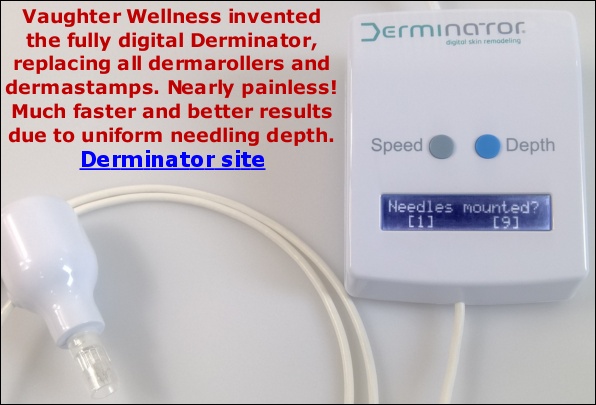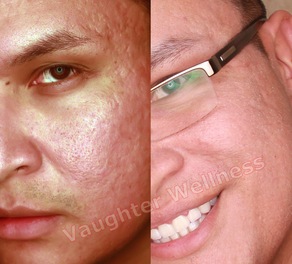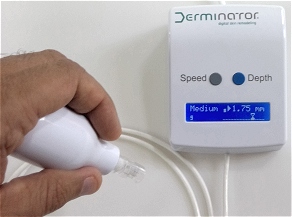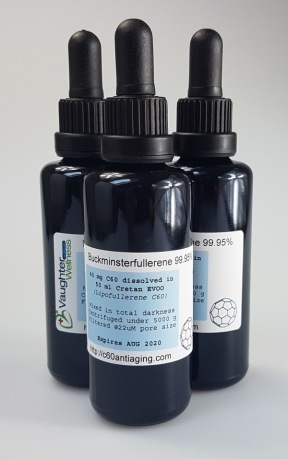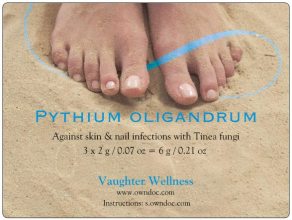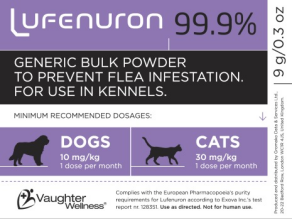
What you need for dermaneedling your skin issues
The microneedling tool or the needle size recommended here for individual skin conditions are not the only ones that can be effective for these conditions. The following advice is to help you make a choice based on our experience but it doesn't mean other sizes will not work. When you have gained experience with dermarolling, you can decide yourself if you prefer a dermastamp or a dermaroller and which size works best for you.
The skin consists of the epidermis and the dermis. Its thickness varies, depending on the location on the body and this also varies with the individual. The epidermis is about 0.1 to 0.2 mm thick. The dermis is around 1 to 2 mm thick. Right underneath the skin, there is mainly fat.
Please search our dermaneedling forum for more details on various subjects and rarer skin conditions. The full and most recent dermaneedling instructions can be found here.
Acne scars
A 1.5 or a 2 mm dermastamp with 12 or 35 needles or/and the single needle cartridge on the Derminator. You do not have to stamp all scars in one session. You can stamp one cheek, do it very thoroughly, let it heal and stamp the other etc.
A regular 1.5 mm dermaroller is also very effective, especially if your scars are on a rather large area or somewhere on your body. Use a dermastamp in addition to it. It is more targeted. You can use both in the same session.
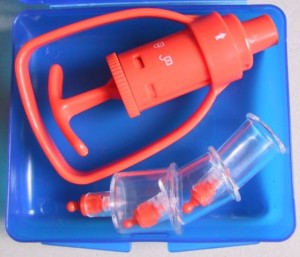 If you have the rolling type of acne scars or your scars have not responded to microneedling after one year, add our suction pump method to loosen the tethering.
If you have the rolling type of acne scars or your scars have not responded to microneedling after one year, add our suction pump method to loosen the tethering.
For post-acne pigmentation/spots or to help preventing acne formation, use a regular 0.5 mm dermaroller.
For shallow scars, use a 1 mm dermastamp with 12 or 35 needles or/and a 1 mm dermaroller or a 1.5 mm large dermastamp with 80 needles. The fewer needles a dermastmap has, the easier and deeper they penetrate due to "fakir effect".
Scars on the nose All invasive skin treatments on the nose are risky because this area reacts and heals unpredictable and it can end up worse. You can try a 1 mm dermastamp but never perform any aggressive stamping here. Start slowly and try one small area first.
Enlarged pores
Dermarolling works very effectively on acne scars but pores are not scars. Pores are ducts in the skin and their size is genetically determined. There is currently no method that can reliably and permanently make pores smaller. Very few of our customers managed to make their pores smaller through microneedling. You can try a regular 0.2 mm or a 0.5 dermaroller to thicken the epidermis or a 0.5 mm dermastamp. A thickened epidermis could make pores look smaller because the pore size is the smallest on the skin's surface and as you go deeper into the skin, the pore channel widens. Some of our customers improved their pore size with the single needle cartridge on the Derminator but always try just one pore to see if it is not making it worse. Do not expect results too soon.
Wrinkles
Wrinkles between the eyebrows ("11's") The single needle cartridge on the Derminator is absolutely the best tool for it. Alternatively, us a 1.5 mm dermastamp with 12 needles.
Wrinkles around the eyes can be treated with a 0.5 mm or a 1 mm dermastamp or a 0.5, 1 or a 1.5 mm dermaroller. A narrow roller (3-liner) is easier to maneuver here but a regular roller is also a possible choice.
The wrinkles around the lips can be treatned with a 1.5 mm or a 2 mm dermastamp with 35 needles. Alternatively a narrow 1.5 mm or a narrow 2 mm dermaroller or a one liner roller. This area is very sensitive and you will likely need an ice cube in a plastic bag to numb the skin before needling there.
For the general rejuvenation of the entire face, use a regular 0.5 mm or 1 mm or 1.5 mm dermaroller. Alternatively a 1.5 mm large dermastamp with 80 needles.
For the neck, a regular 1 mm dermaroller, but avoid the adams' apple.
Nasolabial fold
The deepening of skin folds is caused by:
-
loosening of ligament attachments that attach the skin to the underlying tissues and to the bone
-
loss of skin elasticity
-
loss of fat
-
gravitational forces
Microneedling can improve skin elasticity and trigger collagen but it cannot solve the other causes so there can be no miraculous results expected for the nasolabial fold.
Stamp the fold densely every three weeks with a 1.5 mm dermastamp. You can add rolling the entire face with a 1 mm regular dermaroller for an overall tightening of the skin.
Uneven skin texture and skin tone with no scars
A 0.5 mm regular dermaroller.
Stretch marks
Stretch marks are not just marks; they are in fact very deep scars in the skin.
Generally, use a regular 1.5 mm or a 2 mm dermaroller in combination with a more intensive and targeted tool such as the single needle cartridge for the Derminator or a 1.5 mm or a 2 mm dermastamp with 12 or 35 needles.
For the areas that are difficult to reach with the single needle cartridge, use a regular roller plus a 1.5 or a 2 mm one liner roller.
From our experience, the single needle cartridge is suitable for stretch marks anywhere on the body, except the upper arms, where the skin is thin and needling sometimes caused bruising. Use a 1 mm dermastamp or a 1 mm or a 1.5 mm dermaroller.
Long surgical scars or other long scars (tummy tuck, cesarean etc.)
A 1.5 mm or a 2 mm dermastamp with 12 or 35 needles or/and a 1.5 or a 2 mm one liner dermaroller.
Short surgical scars or other short scars (liposuction, vaccination etc.)
A 1.5 mm or a 2 mm dermastamp with 12 or 35 needles or the single needle cartridge for the Derminator.
Many scars on a large area of the body
A regular 1.5 mm or a 2 mm dermaroller, preferably in combination with a dermastamp.
Scars on the wrist
This area has thin skin, use a 1 mm dermaroller or a 1 mm dermastamp.
Lost elasticity/sun damaged skin
From our experience, the best results for crêpey/sagging skin is the combination of a short-needled dermaroller (to speed up the turnover of the skin) and a long-needled dermaroller (to trigger the formation of new collagen and elastin). We recommend using a regular 0.5 mm dermaroller (roll up to three times a week) and a regular 1.5 mm dermaroller (roll very densely every three weeks). This should also help with age/sun spots. Do not expect miracles though. The biggest problem of aging skin is that the subcutaneous fat that makes the skin nicely plumped up is disappearing. Dermarolling cannot trigger fat production; it can only affect the skin and slightly thicken and tighten it.
A regular 1 mm roller (roll every 10-14 days) is also useful.
If you have visible veins at the back of your hands, do not push the 1.5 mm dermaroller too much in or buy a shorter size. Our Infadolan ointment is excellent for the daily application on the back of the hands. Apply just a little.
Serious burn scars
A 2 mm dermastamp (for smaller scars) or a 2 mm narrow or a 2 mm regular dermaroller for larger areas.
Dilated veins
In our experience, dermarolling does not improve this skin condition.
Keloid and hypertrophic scars
Use our silicone sheets to prevent and treat hypertrophic or keloid scars.
Effective (proven in many medical studies) for the management of both existing and new hypertrophic or keloid scars on closed wounds (or after dermaneedling) or to prevent the formation of hypertrophic or keloid scarring. 1. Wash hands before use. 2. Gently clean the scar and the surrounding skin with a mild soap and rinse in clean, warm water. Thoroughly dry the scar and surrounding skin with a clean cloth or tissue. 3. Take the silicone sheet from its protective cover and if required, cut off a piece that will fit over the scar, leaving a little extra to overlap the skin that surrounds the scar. 4. Remove the protective release film from the silicone sheet. 5. Apply the silicone sheet to the scar, without stretching or with only minor stretching (otherwise it may detach eventually), adhesive side down. If necessary, a light bandage or adhesive tape may be used to help keep the silicone sheet in place. 6. Wash both sides of the silicone gel sheet, the scar and the surrounding skin at least twice daily (more often in case of excessive perspiration) with mild soap and rinse in clean, warm water. Dry thoroughly. Do not use paper-based products to dry the sheet as fibers may stick to it. Do not use irritating soap since this can lead to skin sensitivity. When care is taken, in many cases the silicone sheet can be reused for 2 to 4 weeks. When the silicone sheet begins to deteriorate or cleaning is difficult, it should be replaced. 7. The silicone sheet should be applied at least 12 hours/day. The optimum is at least 20 hours/day. Ideally, the sheet is applied all the time, except during cleaning. 8. For better skin acclimatization, begin with applying the sheet for 4 hours/day for the first 2 days, 8 hours/day for the next 2 days and increase usage time by 2 hours per day until the optimum 24 hours/day therapy time is obtained. 9. Try to avoid ointments on the scar during use because they may lead to reduced pressure on the scar and it is the constant pressure and constant occlusive moisturizing that achieves the anti-keloid/hypertrophic scar effect. When using ointments, apply a thin layer, and only on the scar itself, not the surrounding skin. 10. A treatment duration between 2 and 4 months gives best results. 11. When a rash occurs, reduce daily therapy time. If the rash persist, discontinue use and consult a physician. Do not use on open wounds or when allergic to silicone. Use a regular 0.2 mm dermaroller for product penetration. Often in combination with Minoxidil. Dermarolling greatly enhances the penetration of skin- or hair products so do not apply too much Minoxidil in the beginning, especially not high percentages to avoid (possible, albeit rare) dangerous side effects. If everything goes well, you can slowly increase the application and treated skin surface. If you have red skin due to dilated veins, dermarolling will not help. Try a vascular laser for this. Standard pigmentation is caused by the overproduction or uneven distribution of the pigment Melanin. Melanin is normally present in the skin and it is our natural protection against Ultraviolet radiation from the sun. The darker the skin, the more Melanin it contains. Sun exposure triggers Melanin production but the skin also sometimes produces Melanin as a reaction to certain stimuli, such as long-term inflammation (typical for acne for example) or certain types of skin injury (burns for example). Often, the reason for the excessive or uneven distribution of Melanin is unknown, such as in Melasma or Chloasma. The response of pigmentation to dermarolling depends on how deep the pigmentation is. The shallower, the easier to address it. Dermarolling speeds up the turnover of the skin and that improves pigmentations. In general, relatively shallow dermarolling done more frequently is effective for "ordinary" pigmentation. Use either a 0.5 mm dermaroller (up to three times a week) or a 1 mm dermaroller (once a week). We have customers who improved pigmentation in six months even with a 0.2 mm dermaroller (roll up to every second day). For sun damaged, pigmented skin on forearms or legs, give the skin a good scrub with a pumice stone prior to dermarolling. Roll when the pumice scrub has healed. Application of skin lightening products right after dermarolling will greatly increase the likelihood for improvement of sun/age spots, melasma and brownish pigmentations. Apply for three months, then take a one-month break, etc. The honest answer is, Melasma can both improve and worsen after dermarolling because Melasma is a very unpredictable condition. Any skin procedure or any "intervention" onto the skin (very cold, very hot, strong wind, certain creams, massage etc.) can theoretically make Melasma worse because the skin may react to it by producing more pigment. Everybody reacts differently and what worsens Melasma in one person can improve it or do nothing for the other. You should avoid sun exposure as much as possible. What can be very useful is a 0.2 mm dermaroller to enhance the absorption of Hydroquinone or other lightening products to deep skin layers but you should only do it for three months and then a one month break. You can try rolling with a 0.5 mm or a 1 mm roller (it reaches the dermis part of the skin where dermal Skin pigment (Melanin) is produced by melanocyte cells. They are at the bottom of the epidermis, which thickness is 0.1 - 0.3 mm. When they produce too much Melanin in a certain area, you get hyperpigmentation. And when they do not produce enough or are destroyed or damaged, you get hypopigmentation. Scar tissue differs from normal skin and one of the differences is that it has no, or badly functioning pigmentation processes. Dermarolling often triggers the activity of melanocytes (pigment producing cells) or "wakes up" existing dormant melanocytes. In some cases the color turns completely back to normal (especially if there is hypopigmentation but no scar tissue, such as in Vitiligo for example) and in some cases the color improves but the scars remain still lighter than the surrounding skin. If you have hypopigmented patches, stamp them every 10-14 days with a 1 mm dermastamp. Stamp the hypopigmented patches and also stamp slightly outside of its borders to enable the migration of melanocytes from the surrounding normal skin into the hypo-pigmented areas. Large hypopigmented areas: Roll up to three times a week with a regular 0.5 mm dermaroller. Roll over the hypopigmentation and roll further to normally pigmented skin to hopefully "harvest" some melanocytes and then roll back over the hypopigmentation. Ideally, combine rolling with stamping of the most hypopigmented patches. When the skin is healed from microneedling, expose your hypopigmentation to the sun because Melanin is produced as a reaction to UV (provided there are melanocyte cells in the area to produce it). Microneedling has a limited effect on cellulite.
A 0.2 mm or a 0.5 mm dermaroller the penetration enhancement of anti-cellulite creams.![]()
Thinning hair
You can use a regular 0.5 mm or 1 mm dermaroller to enhance the blood flow to the hair follicles.Pigmentations
Melasma
Melasma resides) in combination with skin lightening products (three months on, one month off and so on) but do it first on a small area for at least three weeks to see how your skin reacts.Hypopigmentation
If you have a hypopigmented, hardened scar or if it is on an area with thick skin (such as the knees), use a 1.5 mm dermastamp.Cellulite
A 1.5 mm or a 2 mm dermaroller to thicken the skin


 Dermaneedling for Alopecia
Dermaneedling for Alopecia What you need for dermaneedling your skin issues
What you need for dermaneedling your skin issues See how competing devices cause skin microtearing
See how competing devices cause skin microtearing Copper peptides for dermaneedling
Copper peptides for dermaneedling Dermarolling explained
Dermarolling explained How dermaneedling works
How dermaneedling works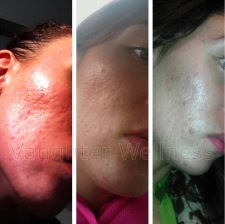
 Psychological aspects of stretchmarks and the beauty cult
Psychological aspects of stretchmarks and the beauty cult Dermaneedling side effects?
Dermaneedling side effects? Stretchmarks: Single needle before and after
Stretchmarks: Single needle before and after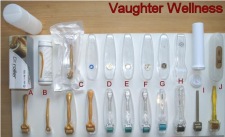
 What to do about Cellulite?
What to do about Cellulite? Dermaneelding: Hype vs. reaslistic results
Dermaneelding: Hype vs. reaslistic results Progress pics: Acne scars, stretchmarks, pigmentation
Progress pics: Acne scars, stretchmarks, pigmentation SkinPen review: Deceptive advertising!
SkinPen review: Deceptive advertising!
